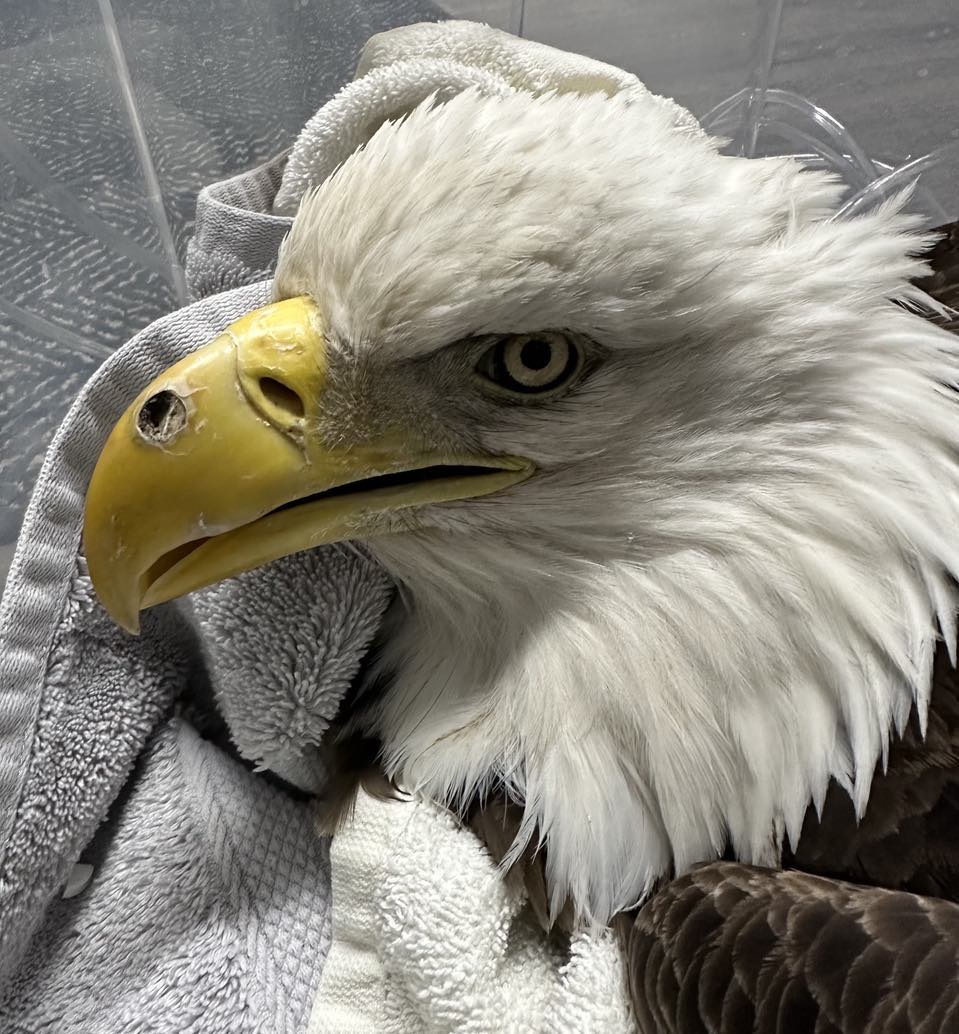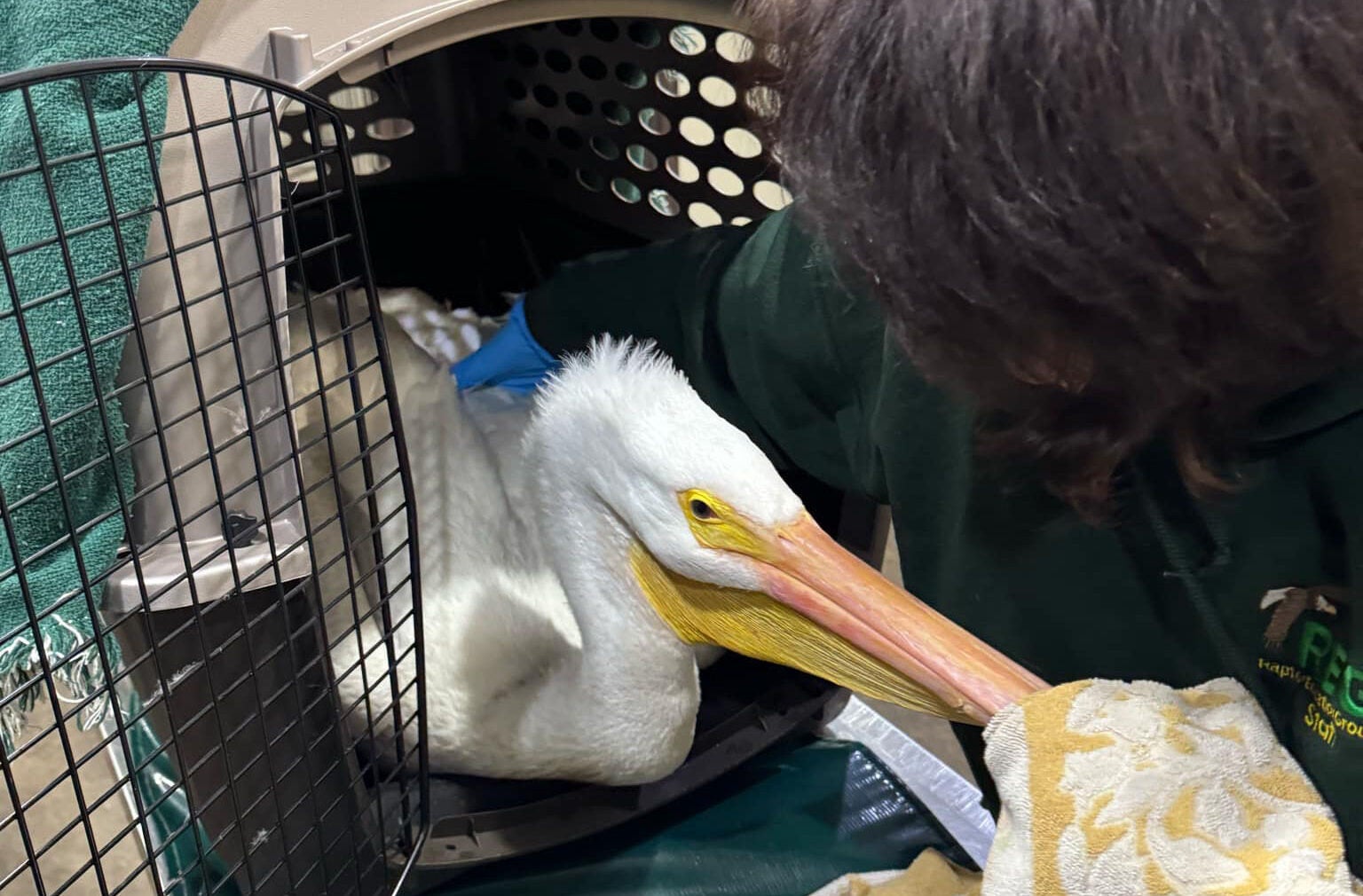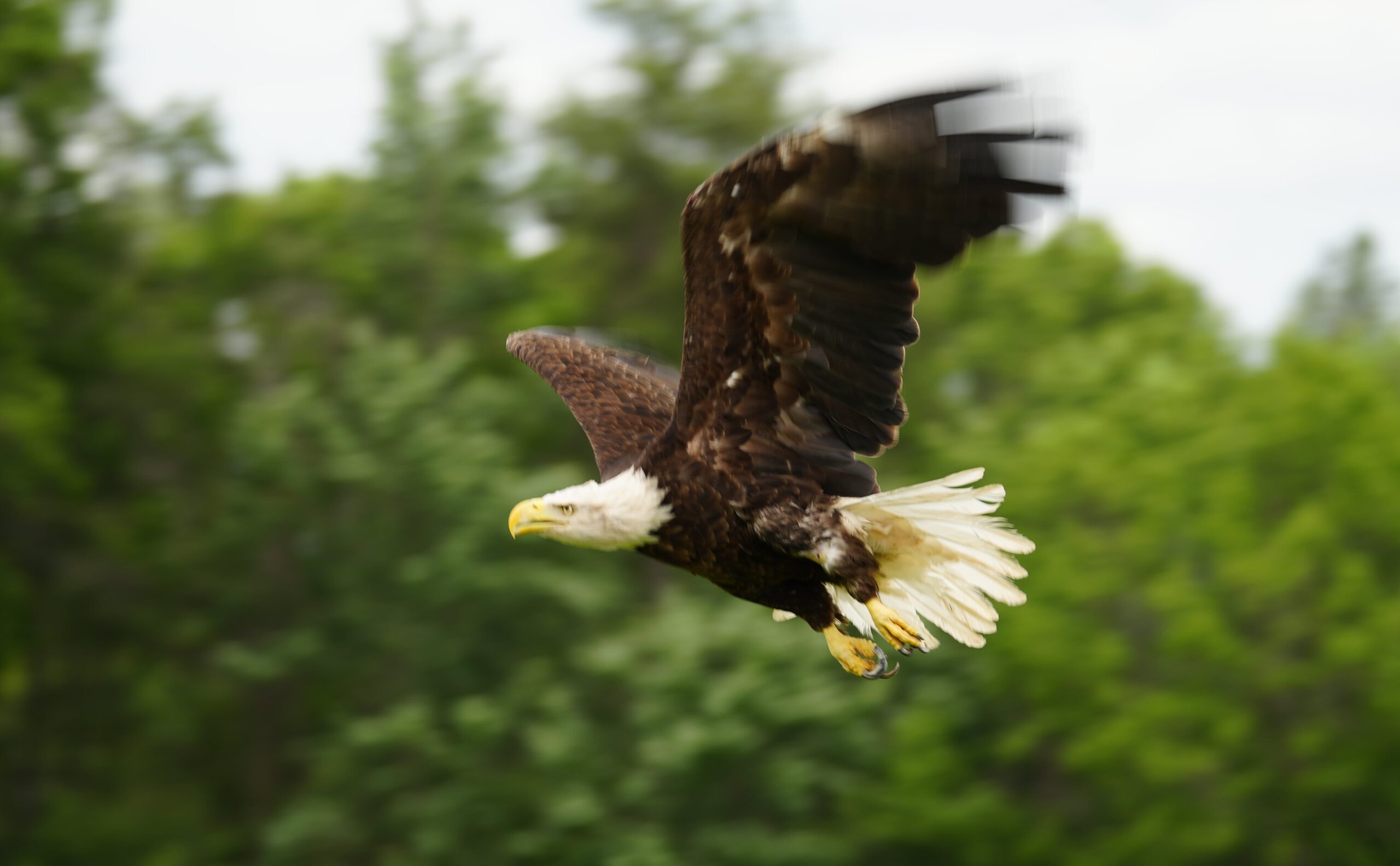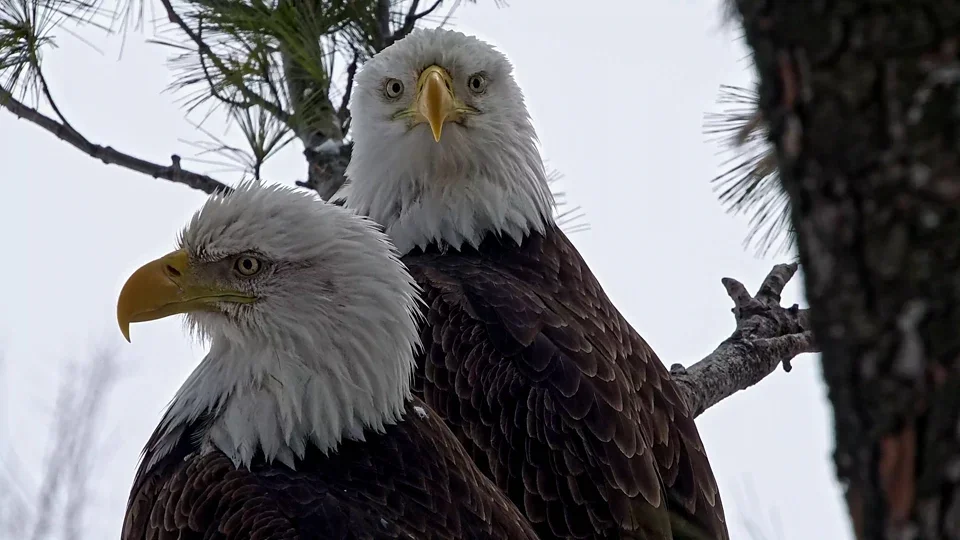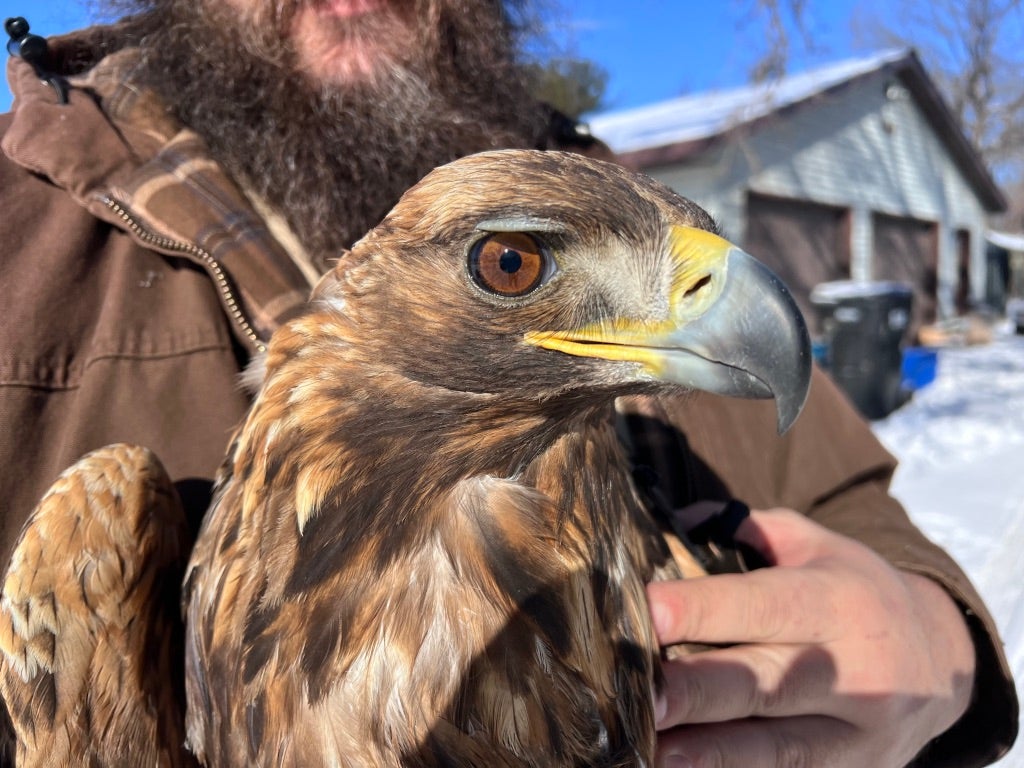A bald eagle died after being illegally shot in Dane County. The bird also had lead poisoning.
The eagle was found unable to fly March 14 on private property near Brooklyn. The landowner contacted the Department of Natural Resources, who notified Hoo’s Woods Raptor Center near Milton.
Dianne Moller, a certified wildlife rehabilitator and founder of Hoo’s Woods, posted about the incident on Facebook to try to find information about who may have shot the eagle.
News with a little more humanity
WPR’s “Wisconsin Today” newsletter keeps you connected to the state you love without feeling overwhelmed. No paywall. No agenda. No corporate filter.
A $1,000 reward also has been established for anyone who provides information leading to a conviction in the shooting.
An examination showed the eagle had been shot in the beak by a lead pellet. It died on March 15.
“The bird probably did not get lead poisoning from that lead pellet. They have to actually ingest lead,” Moller said.
“About 16 hours later, she (had a) seizure and died. Very sad,” she said.
Moller said the bird died of lead poisoning, but would have experienced great discomfort from having a pellet lodged in its nasal cavity. It had to breathe through its mouth and the wound was likely infected.
Lead poisoning impacts the neurological system, Moller said. The eagle was unable to stand, had seizures and was vomiting.
Moller said her center has treated five bald eagles so far in 2024. Four of them had lead poisoning and eventually died. The birds often come in with multiple issues, she said. One was hit by a vehicle.
“A lot of times, there are secondary injuries, so it’s hard to know, was this bird shot in the face first? Did it have a low level of lead?” she said.
Some birds can manage having low lead levels, she said.
“And then the stress of being shot just exacerbated it. It’s hard to know. And we have consulted with our veterinarians and others, and we all have the same questions,” she said.
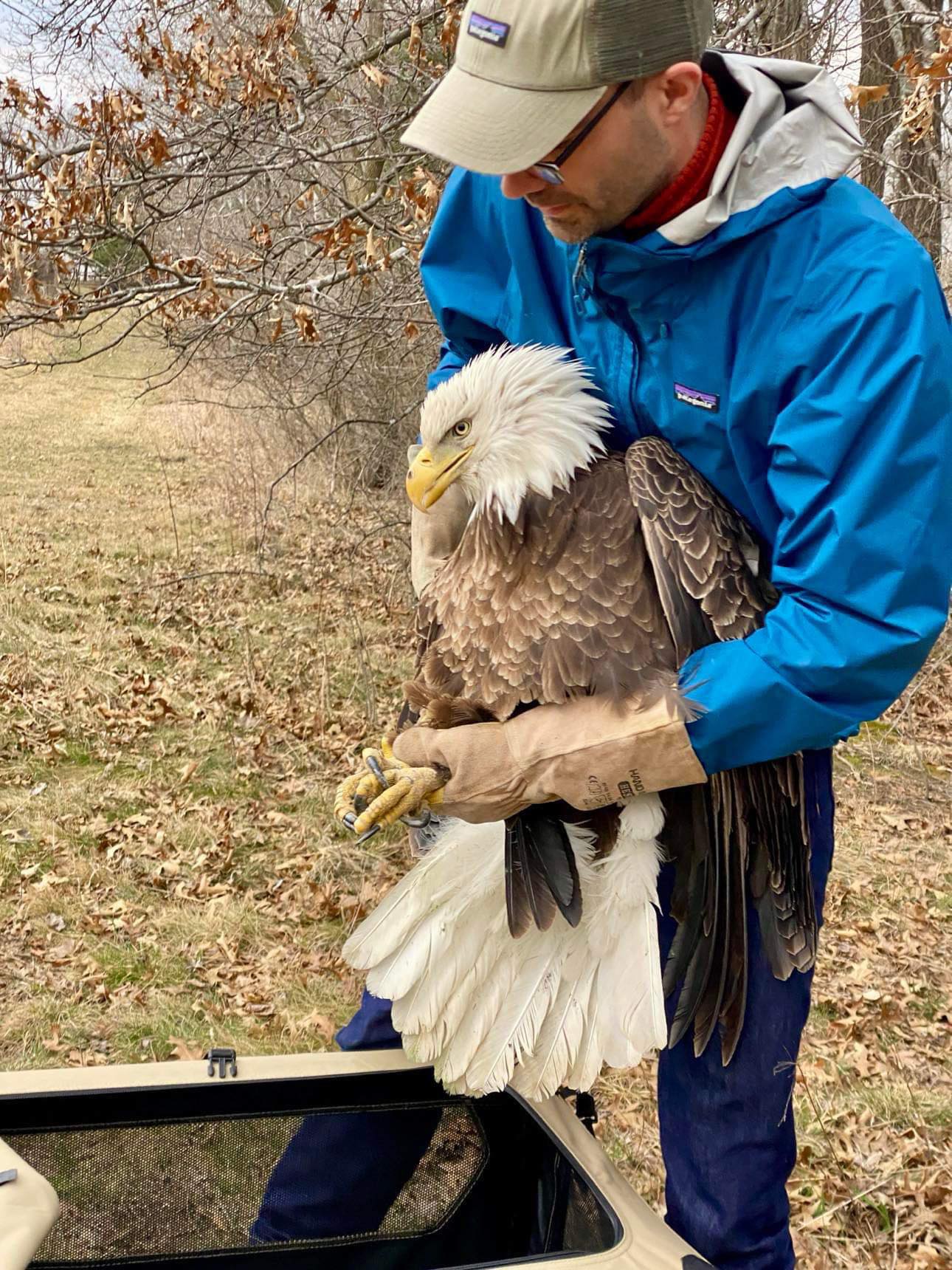
Birds of prey may feed on fish or wildlife carcasses that have been contaminated by lead ammunition and lead sinkers for fishing, Moller said.
Sometimes hunters will intentionally leave behind remains after field dressing a deer, she said.
“They think, well, I’m leaving a gut pile and it’ll help feed the eagles or something else,” Moller said. “But what they don’t realize is they’ve used lead to shoot it, and it takes a piece of lead no bigger than a grain of rice to kill an eagle.”
Jackie Sandberg is the wildlife program manager for Dane County Humane Society’s Wildlife Center. She first received the call about the injured eagle and referred the case to Moller.
Sandberg agreed about the dangers of lead toxicity to wildlife.
She called shooting a protected raptor a “worst-case scenario,” but warned that what animals eat can be just as lethal.
“Moving to alternatives like copper is something that we certainly encourage as a rehabilitation center,” she said.
“There’s a lot of different options that could help maybe reduce the incidences of this kind of activity,” Sandberg said, including bow hunting.
Some animals can be treated for lead poisoning with a series of injections, Moller said.
The Dane County Humane Society’s Wildlife Center has documented 127 cases of illegally shot wildlife since 2014. That includes three bald eagles.
“It’s more common than we’d like to see, and it seems to be becoming more common that they come in with shooting injuries,” Moller said.
She pointed to one study that showed red-tailed hawks are the most common illegally shot bird in Wisconsin in the past five years. Bald eagles were second.
The birds are protected by the federal Bald and Golden Eagle Protection Act. A conviction for shooting one can result in a fine of $100,000, imprisonment for one year, or both, for a first offense. Penalties increase substantially for additional offenses, and a second violation is a felony.
Any information about the shooting can be submitted anonymously to the DNR.
Wisconsin Public Radio, © Copyright 2025, Board of Regents of the University of Wisconsin System and Wisconsin Educational Communications Board.

